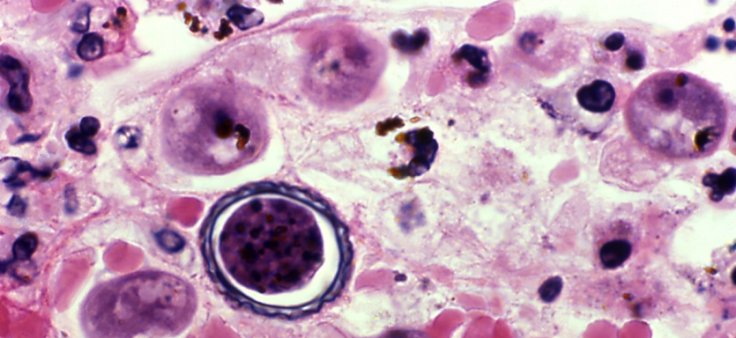An 82-year-old man died after a brain eating amoeba turned a part of his brain into a mushy liquid. The man, who was a gardener, is believed to have contracted the amoeba after coming in contact with contaminated soil while potting some plants.
The autopsy report of the patient, who was previously suffering from blood cancer, showed granulomatous amebic encephalitis as cause of death. It is a rare infection of the brain and spinal cord normally caused by the species acanthamoeba.

Patient Developed Abnormality in the Left Frontal Lobe
In a study published in the New England Journal of Medicine, the authors, Matt Schimmel and Ishan Mehta, from Emory University in Atlanta, said that the deceased arrived at an emergency department and complained of weakness for two weeks. After he became increasingly weaker on the right side along with developing an "altered mental status," an MRI was conducted which revealed an abnormality in the left frontal lobe of his brain.
Initially the doctors treated him for bacterial, fungal and viral meningitis, but his condition continued to deteriorate with repeated seizures and drowsiness. A repeated MRI after two days revealed a large lesion in the temporal lobe," read the report. However, the man died within nine days of arriving at the hospital.
Newsweek reported that the autopsy of the deceased man revealed "liquefactive necrosis" in part of his brain. ScienceDirect describes the condition as characterized by softening of the necrotic tissue to the point at which it transforms into a pastelike mush or watery debris. The report also revealed the presence of acanthamoeba species, allowing the authorities to establish granulomatous amebic encephalitis as the cause of death, reported the outlet.
Acanthamoeba Can Cause Infection in Eye, Skin, and Central Nervous System
The US Centers for Disease Control and Prevention stated on its website that people with weak immune system are susceptible to Granulomatous amebic encephalitis. Stating that most people will be exposed to Acanthamoeba during their lifetime, but very few will become sick from this exposure, the CDC added that acanthamoeba can cause rare but severe infections of the eye, skin, and central nervous system.
The amoeba, which is found worldwide, thrives in water and soil and is capable of spreading to the eyes through contact lens use, cuts, or skin wounds or by being inhaled into the lungs, CDC mentions.
Calling it a rare central infection, Schimmel and Mehta wrote in the NEJM report: "This rare central nervous system infection caused by free-living amoebas, particularly acanthamoeba species, is usually fatal. The amoeba is transmitted through contact with soil or freshwater. Discussion with the patient's wife revealed only an exposure to soil from potted-plant maintenance."
Those who develop granulomatous amebic encephalitis from acanthamoeba infection tend to be diagnosed either in the advanced stages of the disease or after death via autopsy, added the outlet.









